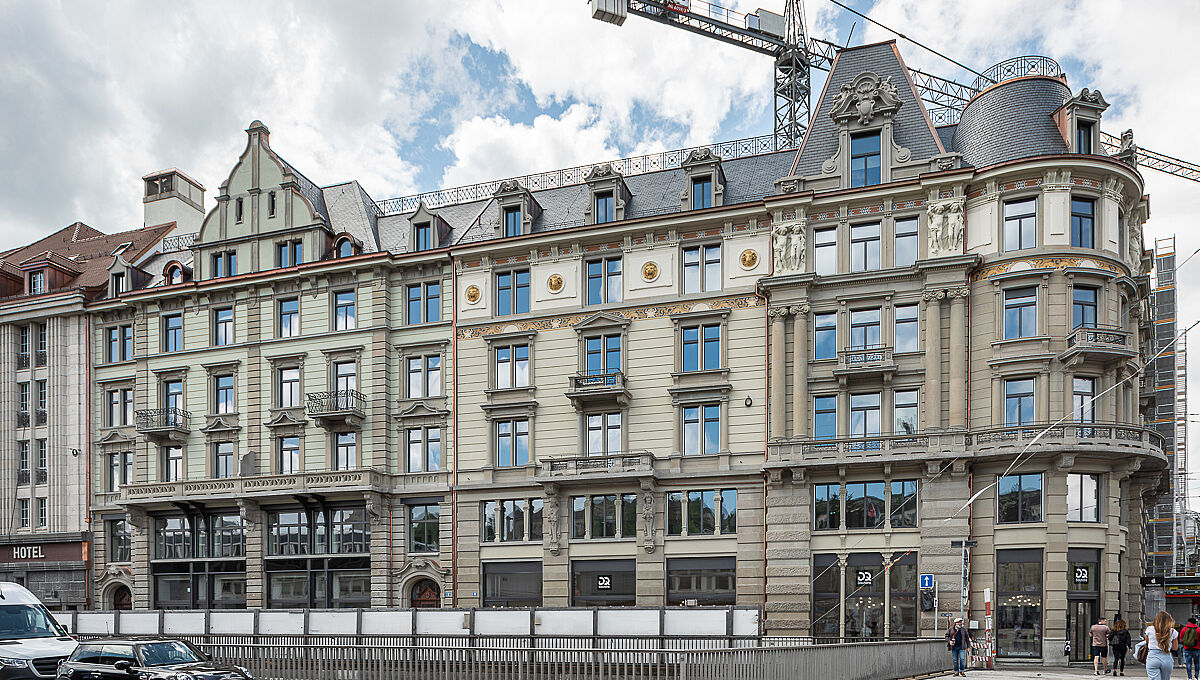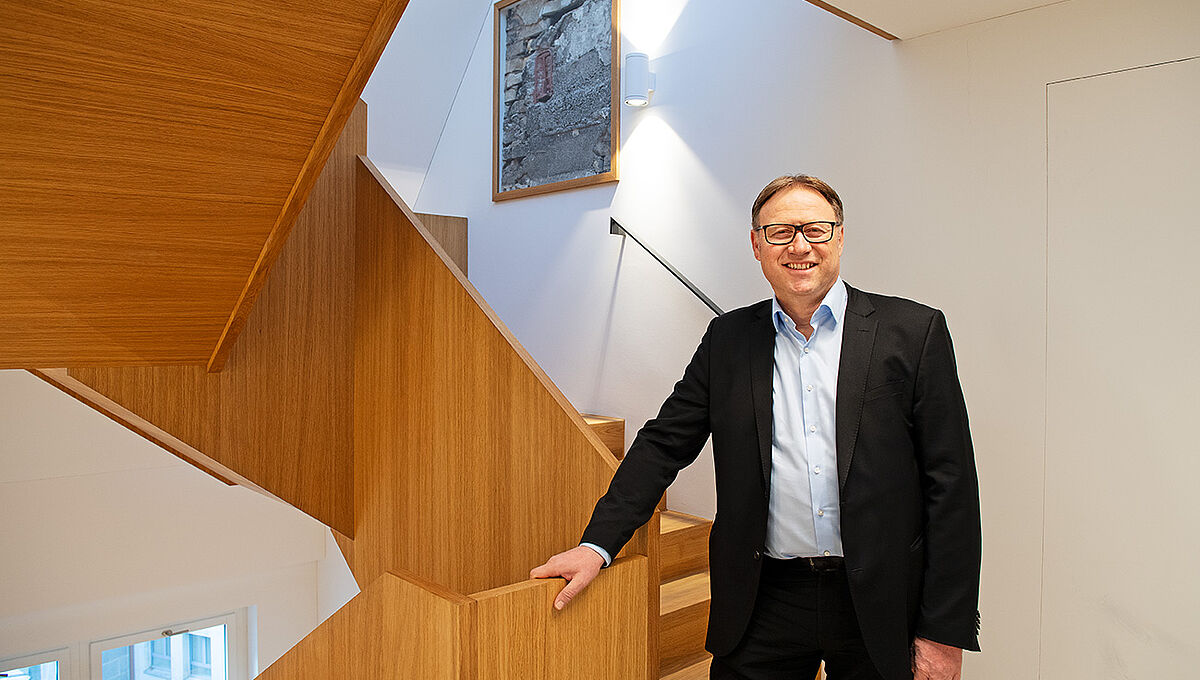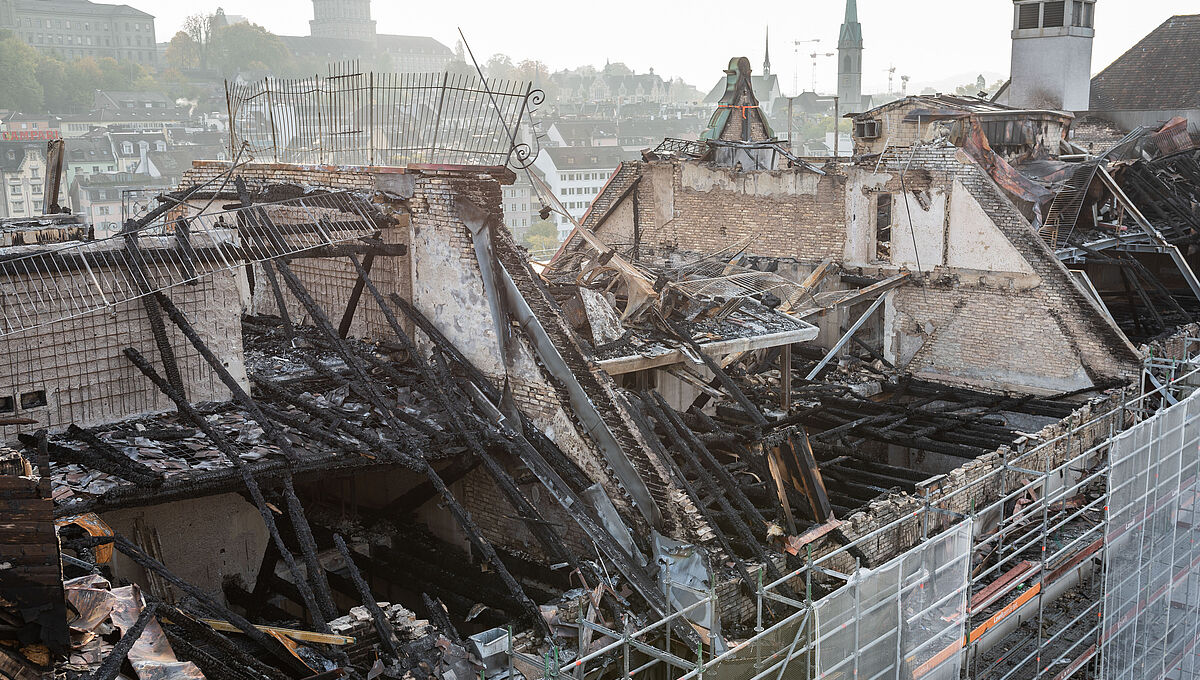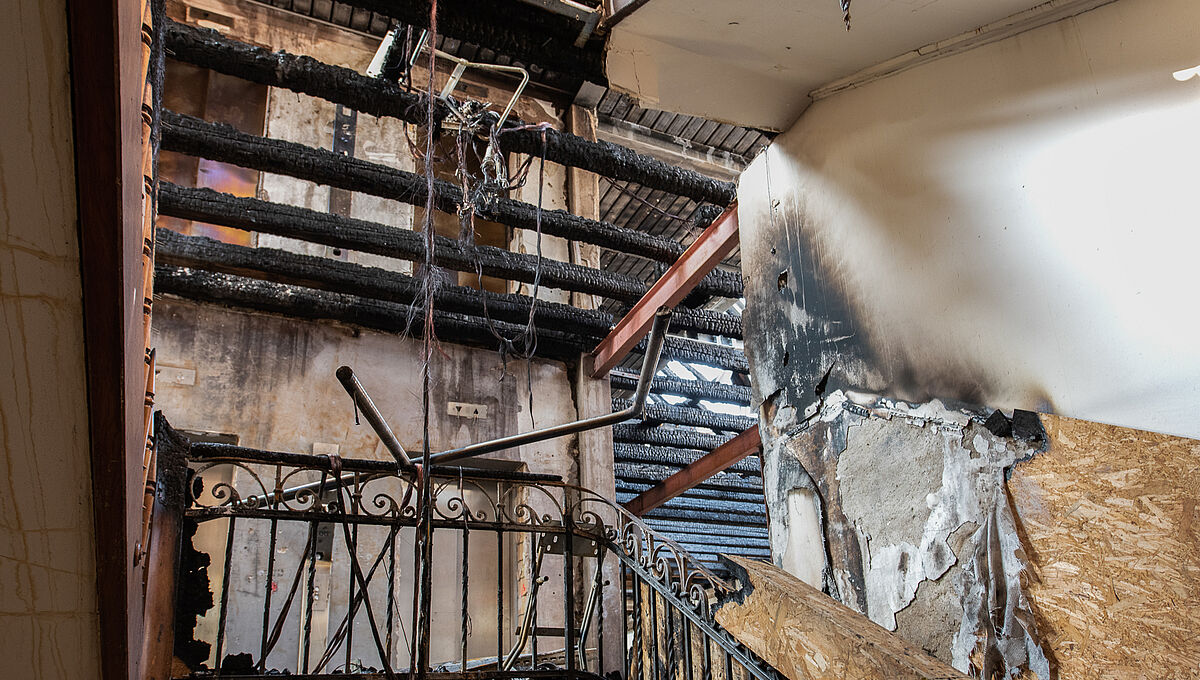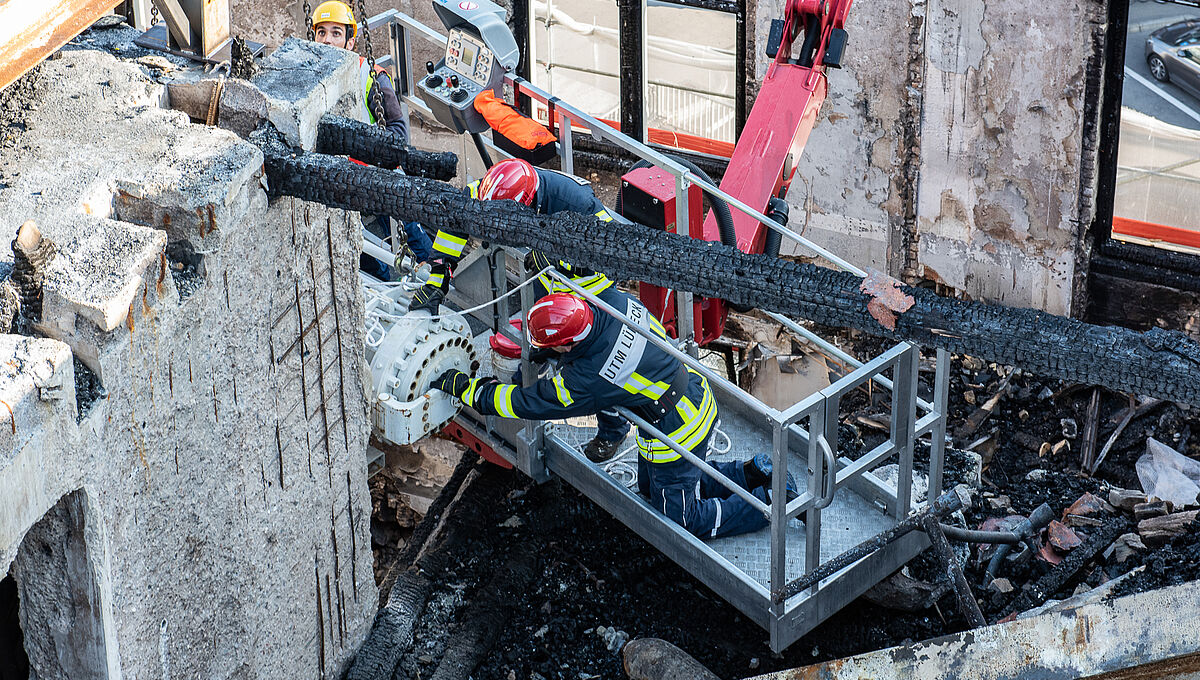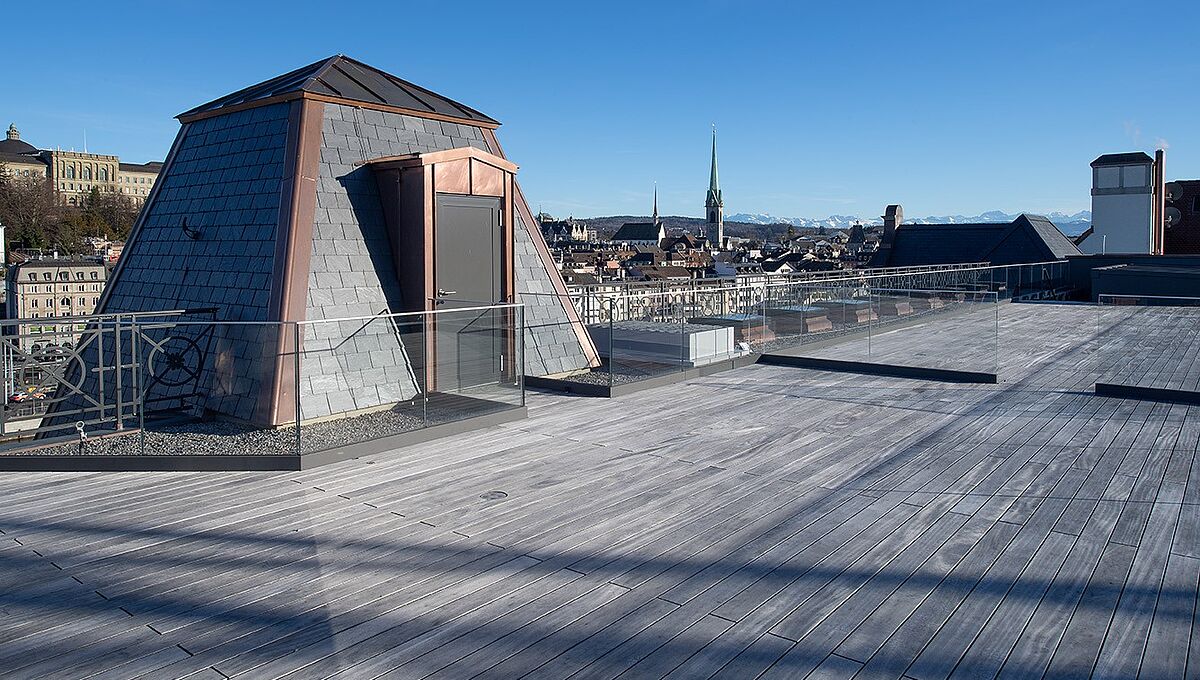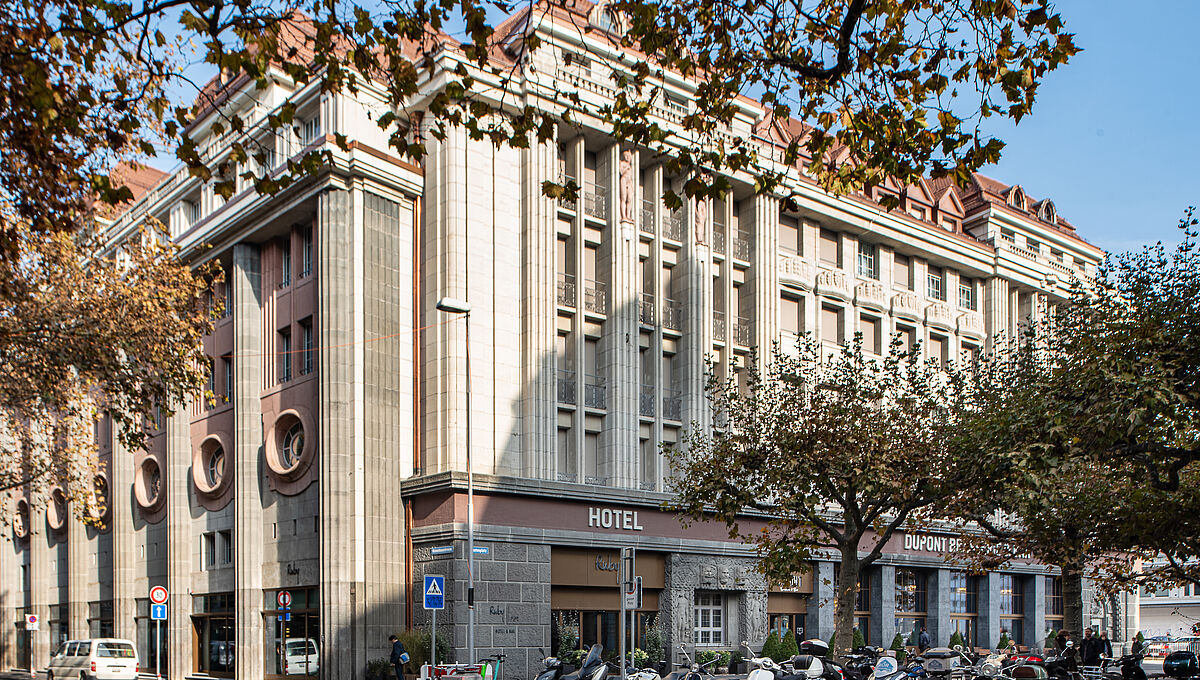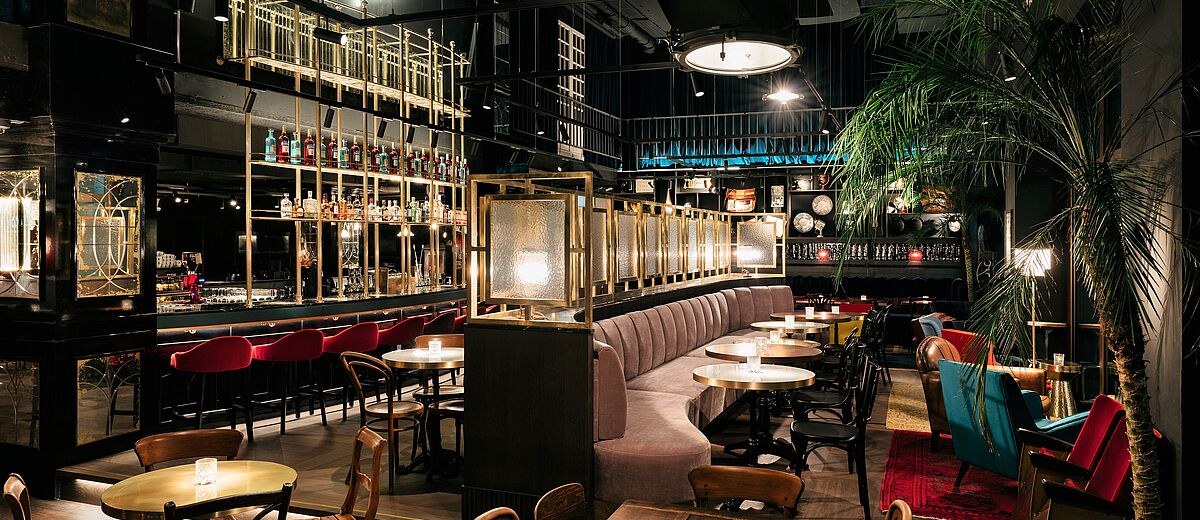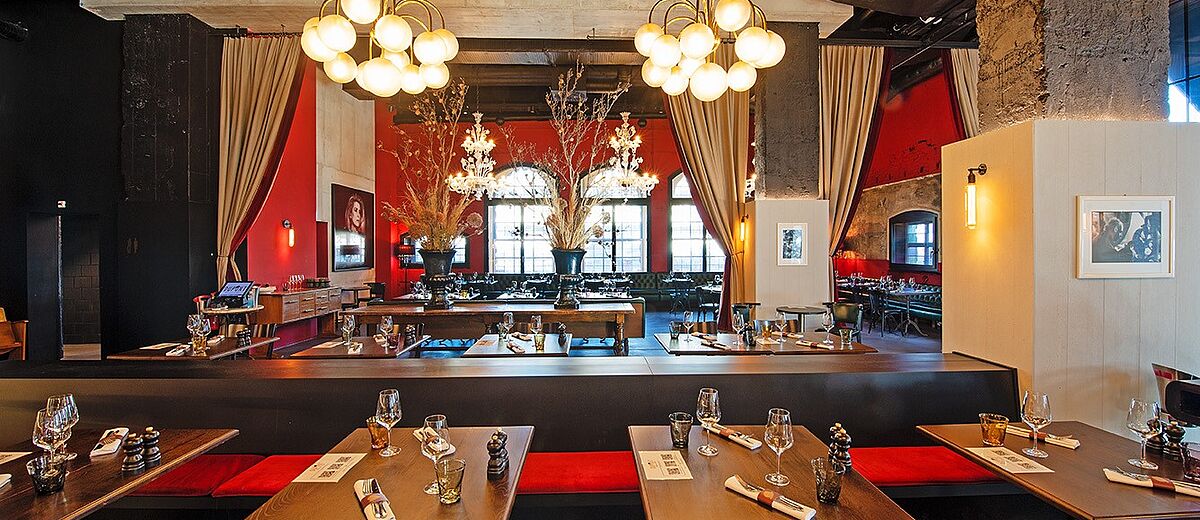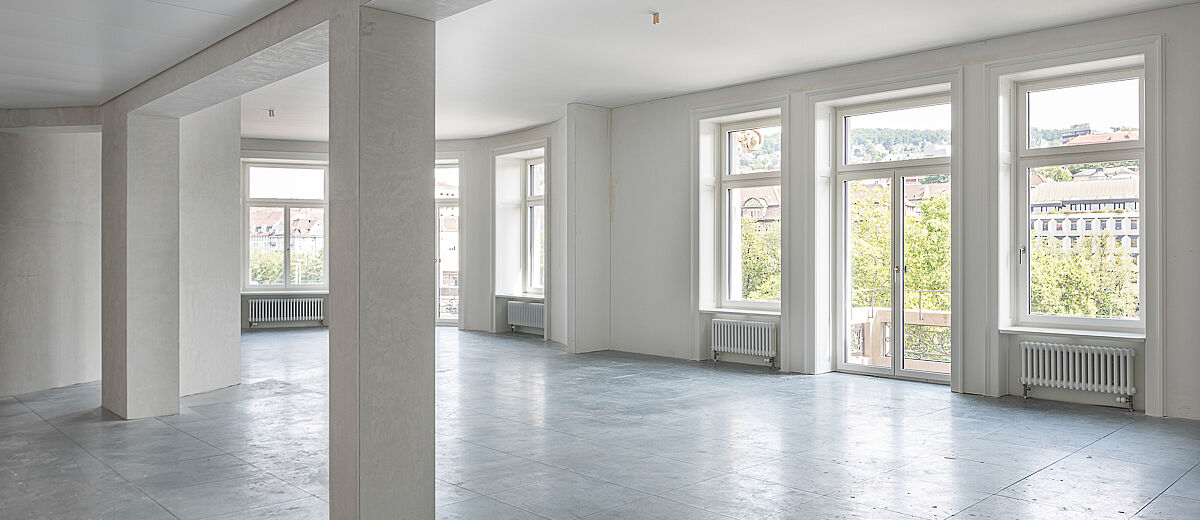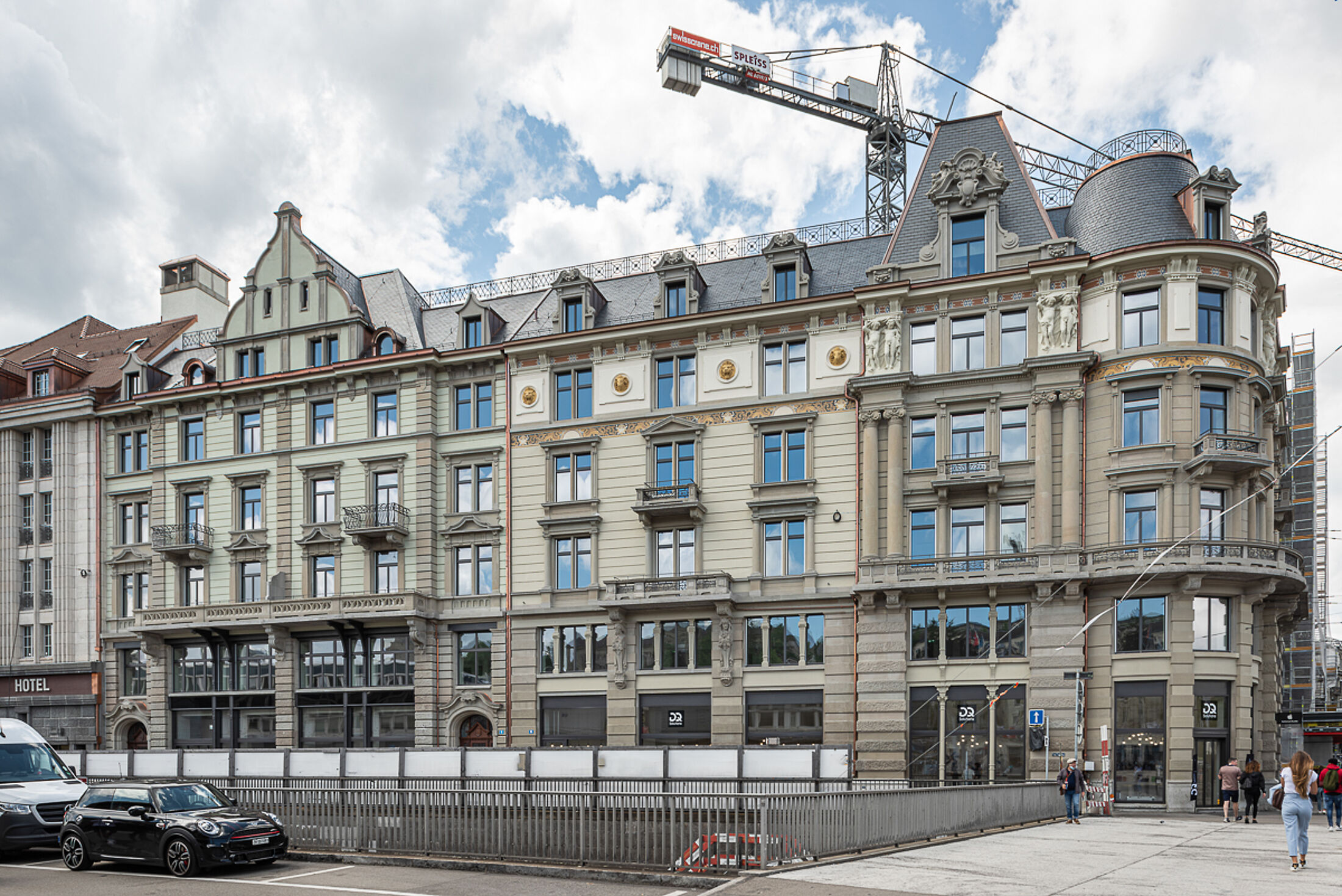
@PSP – Issue 5, March 2022
Like a phoenix from the ashes
Directly opposite Zurich’s main railway station lies an architectural-historical jewel from the Belle Epoque: the building complex Bahnhofplatz 1 and Bahnhofquai 9/11/15.
On the night to Saturday, 25 August 2018, the buildings fell victim to the flames. A major fire destroyed large parts of the exterior structure and the interior. Today, the magnificent ensemble shines again in its former glory. Construction project manager Hans Kessler explains how this was possible.
Mr Kessler, it is now 3½ years since PSP Swiss Property’s building complex on Zurich’s Bahnhofplatz was largely destroyed by a major fire. Has it been possible to determine the cause of the fire in the meantime?
The fire was so intense and extensive that the cause of the fire may never be conclusively determined. The fire investigators were on the construction site every week during the cleanup work and inspected every corner. The clean-up work also had to be continuously coordinated with the investigators and interrupted again and again. Nevertheless, the cooperation went smoothly. It is important to know that not the entire section on Bahnhofplatz burnt out, but “only” the properties at Bahnhofplatz 1 and Bahnhofquai 9/11/15. The “Du Pont” building on the corner of Waisenhausstrasse 2/4 and Bahnhofquai 7 as well as the property at Bahnhofplatz 2 remained unscathed.
You were doing renovation work when the fire broke out. How far along were you at the time?
We were right on schedule, in the final stage of the structural work. While the building complex was one of the most beautiful ensembles of buildings from the Belle Epoque in Zurich – almost a work of art from the outside –, it was no longer state-of-the-art inside. That’s why we had decided to extensively renovate the building complex.
What did you find on the morning of 25 August 2018?
A catastrophe. The roof structure and the top three floors of the buildings Bahnhofplatz 1 and Bahnhofquai 9/11/15 were completely destroyed. The last remaining ceiling was the one above the third floor. Listed stucco ceilings, panels, wall surfaces and ceilings had been destroyed by the fire and the extinguishing water. Much of the interior was no longer usable. Particular damage was also caused by a concrete ceiling that had fallen through almost all the floors down to the first floor.
And then?
The first thing we had to do was, of course, cleaning up. This took several months, until the beginning of 2019. The effort was enormous and not comparable to anything anyone on the construction site had ever seen before. During the first weeks and months, the workers had to lie on the lifting platform, secured and wearing breathing masks in any weather, disposing of beam by beam and fragment by fragment. One cannot pay enough respect to the workers.
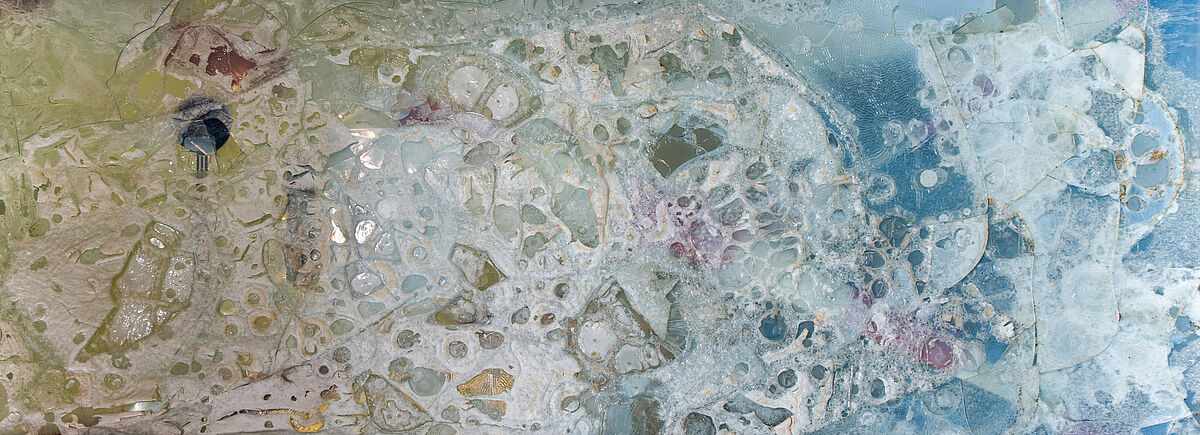
Were there any curiosities during the clean-up?
Yes, there was the matter of the acetylene cylinders, for example: Before the fire, roofers and steel workers were at work, using acetylene for their work. During the clean-up work we found those containers. But what to do with them? The containers are highly explosive. For this specific reason we brought in experts from Hamburg who disposed of the cylinders in a special Castor container. It was a bit like defusing a bomb, as you sometimes see on TV.
"One cannot pay enough respect to the workers."
Another time, three weeks after the fire, we had to activate our emergency scenario once again: The weather forecasts announced a storm with wind speeds of up to 120 km/h. We had gable walls that were secured, of course. The engineers assumed that the gable façades would be able to withstand gusts of up to 90 km/h. However, at the announced 120 km/h they might tip over and onto the street. We immediately contacted the police. During the time when the storm swept over Zurich, the surrounding area was therefore closed off in consultation with the weather service and the emergency services. The construction withstood the storm.
At some point, the question arose as to how to proceed – demolition or reconstruction?
For us and the city, it was quickly clear that reconstruction was the only option. The building complex should again have the same appearance as before the fire. The 120-year-old ensemble of buildings is too valuable and too important for the cityscape to simply be replaced. The roof and the beautiful façades, but also parts of the building’s interior, such as staircases, were protected as historic structures. Together with the city’s department for the preservation of historical monuments, we decided which parts of the building should be preserved or rebuilt as close as possible to the original.
A crucial question was whether or to what extent the façade could be preserved – especially since a pure reconstruction, the rebuilding with new materials, would not necessarily have been in the spirit of monument protection. We were all relieved that the outer historic structure of the building had remained largely intact and could be supplemented where necessary. Inside, we were a little more flexible in the reconstruction, because practically everything had been destroyed. Before the fire, there were standard floors with stucco decorations and wall paintings, some of which were worthy of protection, and which were supposed to be restored and preserved. But they were devastated by the fire, extinguishing water and rain. We were lucky with staircase endings in a staircase worthy of protection – we had removed these endings for restoration before the fire and stored them elsewhere so that they could now be put in place again.
What was the situation with regard to the statics?
At first, just to be on the safe side, we assumed that the entire building was in danger of collapsing. However, comprehensive analyses by the engineers concluded that the façade was structurally sound and the building as a whole was not in danger of collapsing.
"The parties involved have done an excellent job."
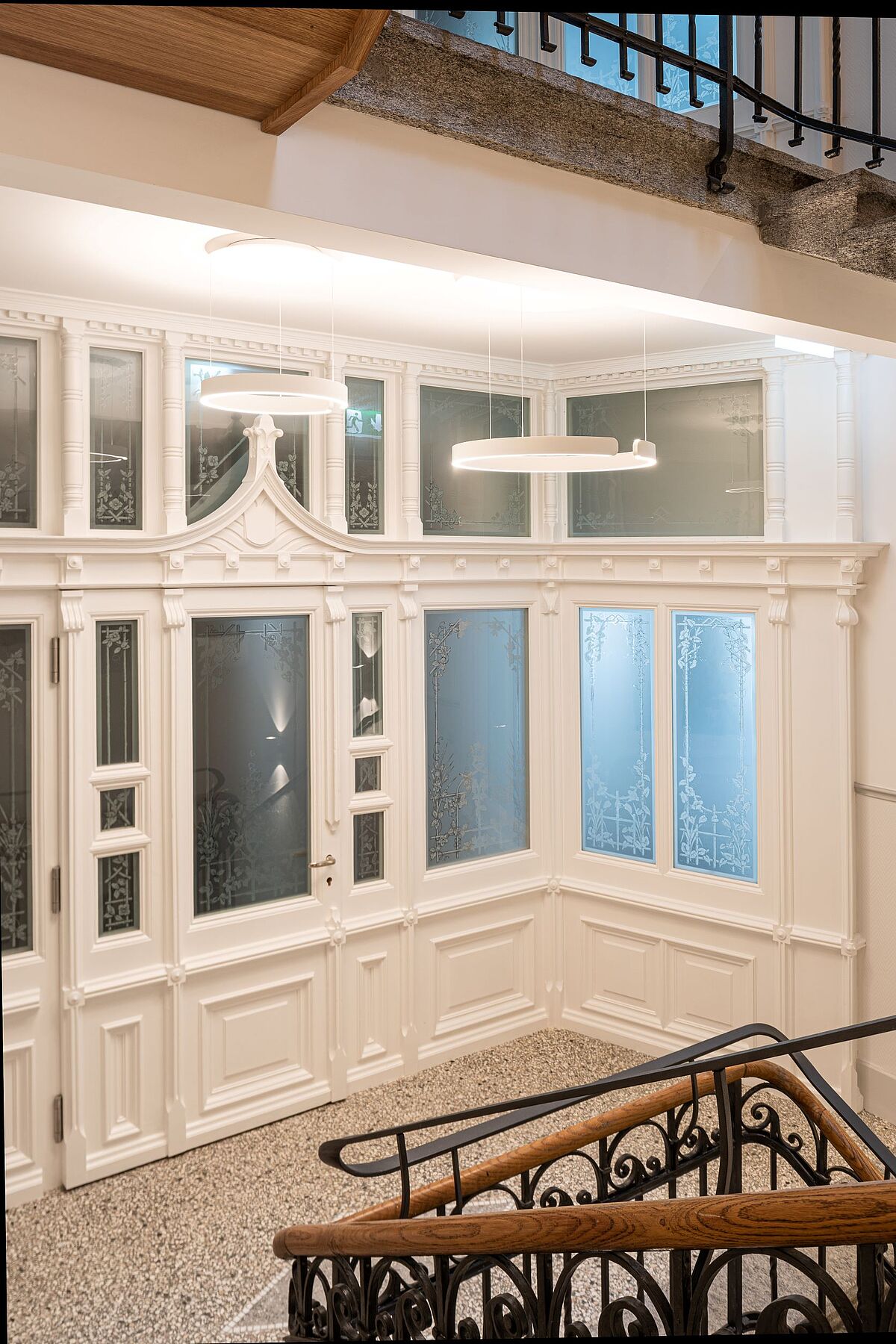
What did the department for the preservation of historical monuments attach particular importance to in the reconstruction?
Because of the urban and architectural significance of the buildings, the department’s focus was on the external appearance. To preserve this, we completely rebuilt and reconstructed the burnt roof with its large dormer windows. To do this, we used original materials and re-roofed with natural slate. We have completely reconstructed the natural stone façade facing Bahnhofplatz/Bahnhofquai in coordination with the department for the preservation of historical monuments; today, it looks as it did before the fire. Actually, from the outside, you can’t really tell any more that there ever was a fire here. The parties involved have done an excellent job. In the interior, due to the massive destruction, the department for the preservation of historical monuments agreed that we should restore the ceilings to their original positions, whereas we did not need to reconstruct the lost interior fittings.
How far along are you today?
The construction work has been completed and we have handed over the property to our main tenant, the co-working provider Signature. In view of the Herculean task that we were confronted with, the delay of only two years is a remarkable achievement by all those involved. The neighbouring building at Waisenhausstrasse 2/4 and Bahnhofquai 7, including Beatenplatz 4, has also been completed. The “Ruby Mimi” hotel with 208 rooms and the “DUPONT Brasserie & Bar” restaurant have been in operation there since last autumn.
"In view of the Herculean task that we were confronted with, the delay of only two years is a remarkable achievement by all those involved."
That only leaves Bahnhofplatz 2. How far along are you here?
Due to long-term leases, we were only able to start the renovation work here at a later date. There will be around 2,100 m2 of office space on 6 floors and 300 m2 for a shop on the ground floor with over 200 m2 of storage space in the basement. We are progressing according to plan, so that the premises will be ready for tenant fit-outs from mid-2023.
How would you describe the building complex today, after the fire, after the reconstruction, after the renovation?
A top product in a top location: A unique historic building complex with modern hotel and gastronomy concepts, shops and offices with state-of-the-art infrastructure and technology in a prime location in the heart of Zurich.
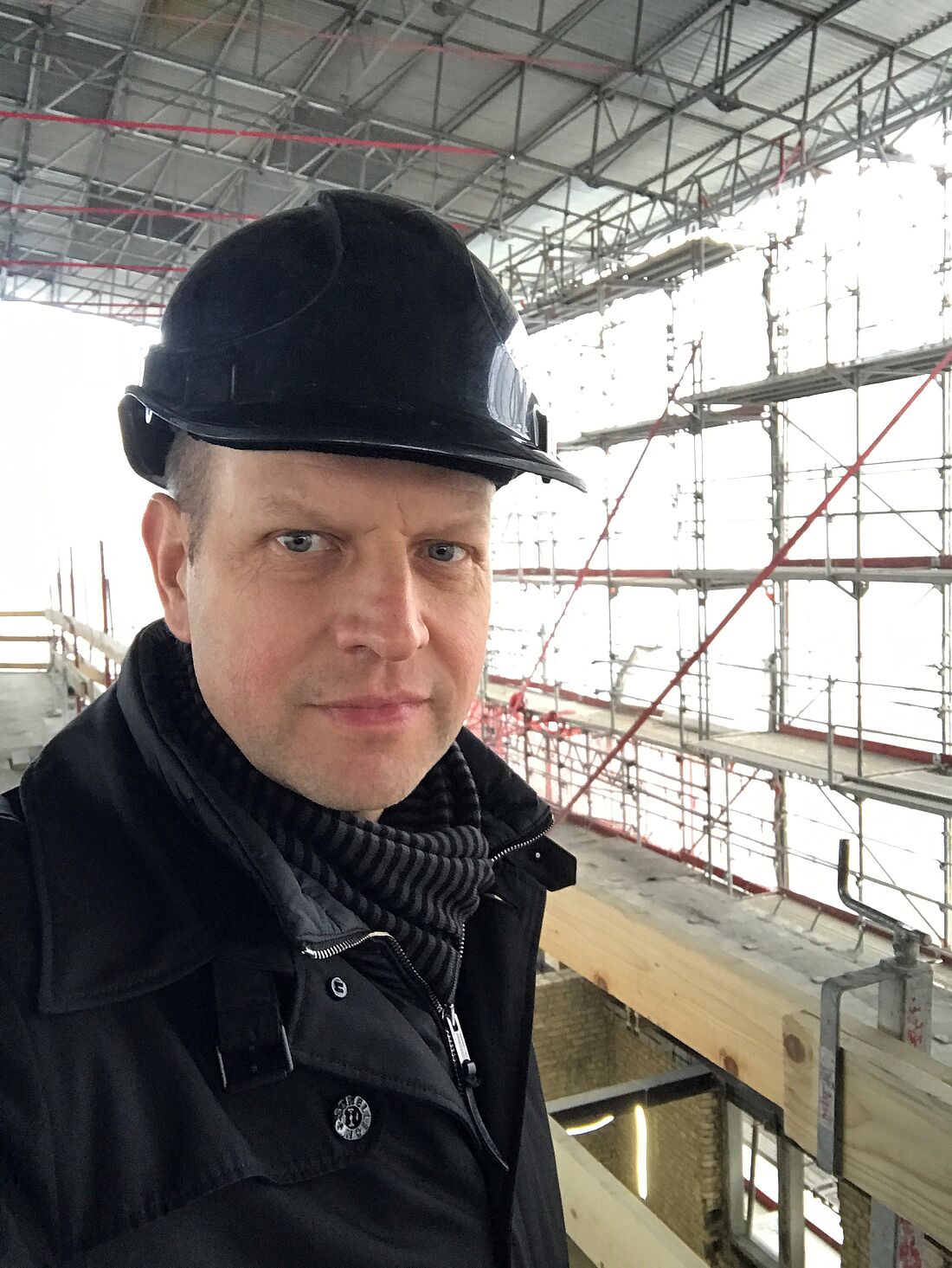
This interview was conducted by Norbert Bernhard, editor of Private – The Money Magazine, and was also published in the magazine's 1/2022 issue.
